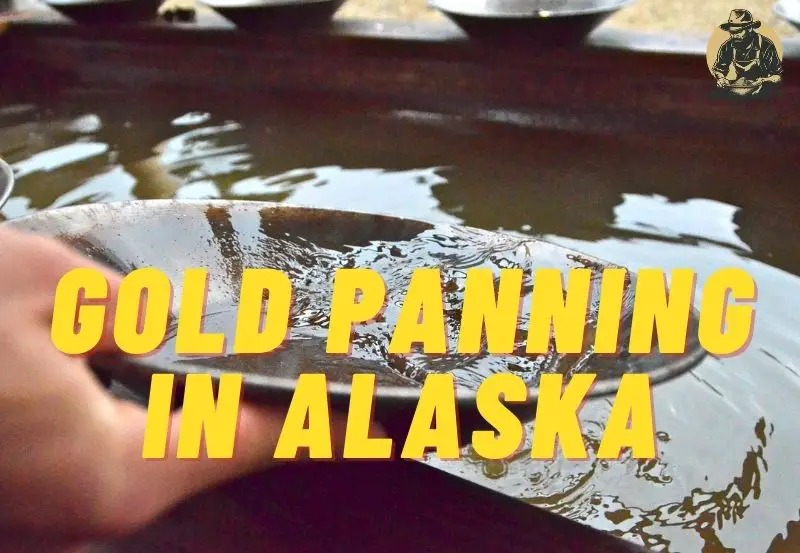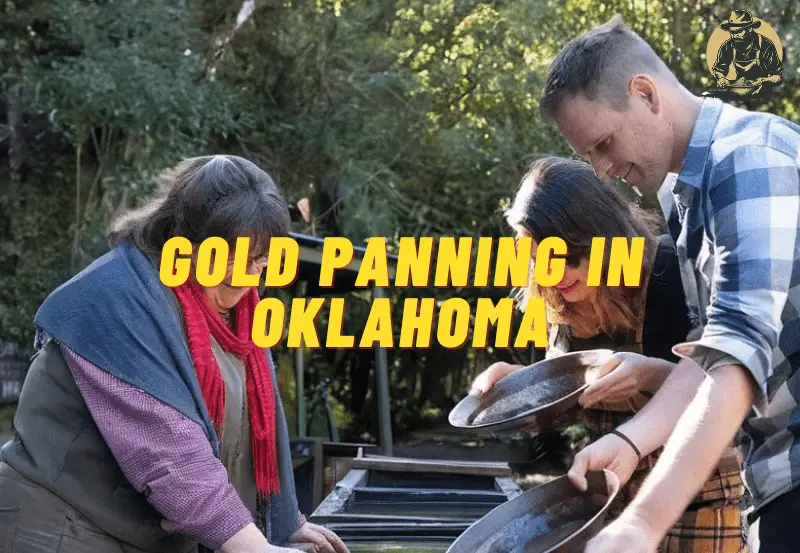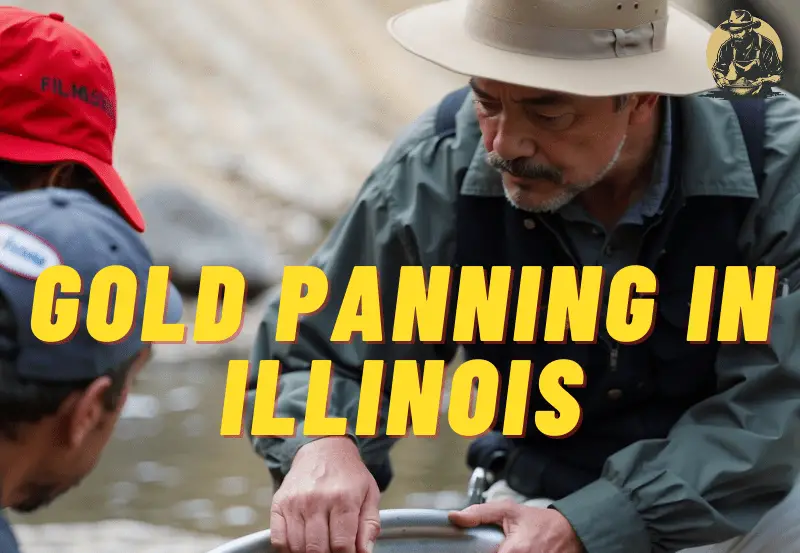Gold Panning in Alaska imagine yourself standing knee-deep in icy-cold water, the breathtaking Alaskan wilderness surrounding you, as you painstakingly sift through the riverbed. With each scoop, the anticipation grows, because here in Alaska, gold can be found just beneath the surface. In this article, we’ll take you on an adventure like no other as we explore the exhilarating world of gold panning in the Last Frontier. Get ready to unearth Alaska’s hidden treasures and discover the thrill of striking it rich in the land of giants.
History of Gold in Alaska
Gold Rush in the 1800s
The history of gold in Alaska dates back to the 1800s when the first gold rush occurred. Prospectors from all over the country flocked to Alaska in search of riches. The discovery of gold in the Klondike region in 1896 further fueled the frenzy, leading to a massive influx of miners. This period in Alaska’s history saw the rise of iconic mining towns such as Dawson City and Nome, with thousands of people trying their luck at striking it rich.
Discovery of the Klondike Gold Fields
One of the most significant events in Alaska’s gold mining history was the discovery of the Klondike Gold Fields in 1896. The news of gold being found in large quantities spread like wildfire, attracting miners from all over the world. The Klondike Gold Rush, as it came to be known, led to the establishment of Dawson City, a booming town that served as the main hub for gold seekers in the region. This historic event marked a turning point in Alaska’s gold mining industry.
The Nome Gold Rush
Another notable chapter in Alaska’s gold mining history is the Nome Gold Rush. In 1899, gold was discovered along the beaches of Nome and rapidly became one of the richest gold fields in the world. Miners braved the harsh Arctic conditions and flocked to the area, hoping to strike it rich. The Nome Gold Rush attracted thousands of prospectors and led to the development of infrastructure such as roads, railways, and steamship lines. Though the Nome Gold Rush eventually declined, it left behind a rich legacy in Alaska’s mining history.
Modern-Day Gold Mining in Alaska
Gold mining still plays a significant role in Alaska’s economy and culture. Modern-day techniques and technologies have made it possible to extract gold efficiently and sustainably. Alaska continues to be a top producer of gold, with several operating mines throughout the state. The industry has evolved to comply with stringent environmental regulations, ensuring that natural resources are protected. Today, both large-scale mining operations and small-scale recreational gold panning contribute to Alaska’s rich mining heritage.
Best Locations for Gold Panning
Fairbanks Area
The Fairbanks area is widely regarded as one of the best locations for gold panning in Alaska. The region has a rich mining history and offers ample opportunities for both recreational panners and serious prospectors. Chena River and the various creeks that flow through the area are known to have deposits of placer gold. The Ester Gold Camp, just outside of Fairbanks, is a popular spot for gold panning enthusiasts, providing access to miles of prime panning areas.
Chicken and the Fortymile Mining District
Located in the northeastern part of Alaska, Chicken and the Fortymile Mining District offer excellent gold panning prospects. The area is known for its rich history and abundant gold deposits. The Chicken Creek, a tributary of the Fortymile River, is renowned for its placer gold deposits. Recreational gold panning is popular in this area, and visitors can try their luck in the numerous creeks and streams throughout the district.
Nome and the Seward Peninsula
Nome and the Seward Peninsula are synonymous with gold mining in Alaska. The region’s beaches and offshore waters have been a source of gold for over a century. Recreational gold panners can sift through the sands along the shoreline or even try their luck with beachcombing. With proper permits and equipment, you may discover small gold nuggets or even larger golden treasures. Nome is a must-visit destination for anyone interested in gold panning in Alaska.
Juneau and Other Southeastern Areas
Southeast Alaska, particularly around Juneau, offers unique gold panning opportunities. The region’s dramatic landscapes and rich mining history make it a popular destination for both locals and tourists. The Gold Creek in Juneau is a prime location for recreational gold panning, with gold deposits still present in the area. Other areas such as Skagway and Haines also have gold panning options, allowing visitors to experience the thrill of finding gold against the backdrop of stunning natural beauty.
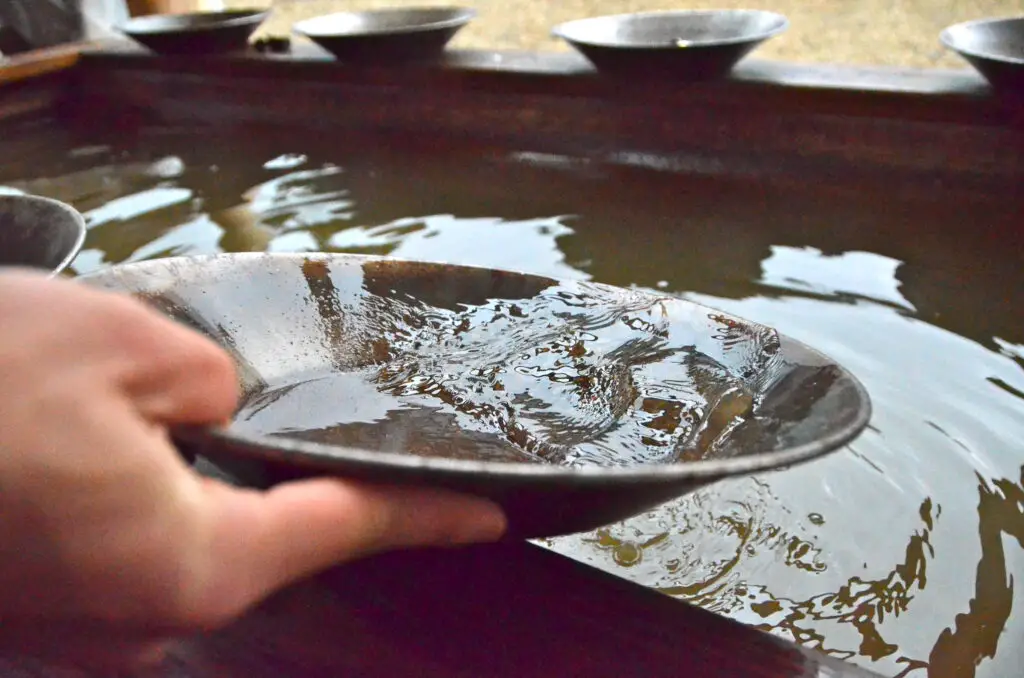
Permits and Regulations
Obtaining a Recreational Gold Panning Permit
Before embarking on your gold panning adventure in Alaska, it is important to obtain the necessary permits. Recreational gold panning generally does not require a permit for small-scale operations. However, it is always best to check with the local authorities or the Alaska Department of Natural Resources to ensure compliance with any requirements. Keep in mind that commercial mining operations have different permit requirements and may require additional documentation.
Understanding Environmental Regulations
Alaska takes environmental regulations seriously, and it is crucial to understand and follow these guidelines while gold panning. Responsible mining practices help protect the delicate ecosystems and prevent negative impacts on fish habitats, water quality, and wildlife. Miners must be aware of the rules regarding mining waste management, water usage, and the use of chemicals. By adhering to these regulations, you can enjoy the adventure of gold panning while preserving the natural beauty of Alaska.
Guidelines for Responsible Gold Panning
Responsible gold panning involves minimizing environmental impact and leaving the area undisturbed as much as possible. Follow these guidelines to ensure a sustainable gold panning experience:
- Choose designated gold panning areas and respect private property rights.
- Avoid digging in or near waterways to prevent erosion and protect aquatic habitats.
- Use a gold pan or hand tools to recover gold and avoid damaging the environment.
- Properly dispose of waste material and pack out any trash or debris.
- Leave natural features and historical artifacts untouched for others to enjoy.
- Educate yourself about local wildlife and follow guidelines for wildlife encounters.
By practicing responsible gold panning, you not only contribute to the conservation efforts but also pave the way for future generations to enjoy the thrill of discovering Alaska’s golden treasures.
Essential Gold Panning Equipment
Gold Pans and Classifiers
A gold pan is an essential tool for any aspiring gold panner. It is used to separate gold from other sediments by swirling water and material in the pan. Look for a durable and versatile gold pan that suits your needs and preferences. Additionally, classifiers are helpful in quickly sorting larger rocks and debris from the finer sediments, making the panning process more efficient.
Sluice Boxes and Dredges
For more serious gold panners, sluice boxes and dredges can greatly enhance the efficiency and effectiveness of gold recovery. Sluice boxes allow water to flow through a series of riffles, leaving the heavier gold particles behind. Dredges, on the other hand, are mechanical devices that suction up sediment from the riverbed, separating the gold in the process. These larger-scale equipment options are suitable for those who are looking to maximize their gold recovery.
Metal Detectors and Prospecting Tools
Metal detectors can be valuable tools for gold panners, allowing them to pinpoint areas with higher concentrations of gold. When used in conjunction with other equipment, metal detectors can greatly enhance the chances of finding gold. Additionally, various prospecting tools such as shovels, pickaxes, and digging tools are essential for excavating and accessing gold-rich areas.
Safety Gear and Accessories
Safety should always be a priority when engaging in any outdoor activity, including gold panning. Remember to bring essential safety gear such as sturdy footwear, gloves, and protective clothing to guard against hazards such as sharp rocks or extreme weather conditions. Moreover, items like water bottles, sunscreen, insect repellent, and a first-aid kit are essential accessories to ensure a safe and comfortable gold panning experience.

Techniques and Tips for Successful Gold Panning
Preparing for Your Gold Panning Adventure
Before you set out on your gold panning adventure, it’s important to be well-prepared. Research the locations you plan to visit and gain a thorough understanding of the local geology and history of gold mining. Familiarize yourself with the techniques and equipment you will be using. Plan your trip accordingly, considering factors such as weather conditions, accessibility, and permits required. By adequately preparing, you can maximize your chances of a successful gold panning experience.
Locating Potential Gold Deposits
Finding gold requires careful observation and understanding of the geological features that indicate the presence of gold deposits. Look for areas where the flow of water slows down or changes direction, as this is where gold is likely to settle. Pay attention to changes in bedrock or any signs of mineralization. Research local topographic maps or utilize online resources to identify potential gold-bearing areas. Persistence and patience are key when identifying potential gold deposits.
Proper Gold Panning Techniques
Mastering proper gold panning techniques is crucial to effectively separate gold from other materials and maximize your recovery rates. Here are some important techniques to keep in mind:
- Fill your gold pan with a mixture of gravels and sediment from the potential gold-bearing area.
- Submerge the pan in water and agitate it in a circular motion to loosen the sediments.
- Continue swirling the water and removing larger rocks and debris.
- Tilt the pan forward and backward, allowing the water to carry lighter materials away, leaving the heavier gold behind.
- Repeat the process, gradually reducing the amount of material in the pan until only the concentrated black sand and gold remains.
- Carefully remove the gold by using tweezers or a snuffer bottle.
Remember to practice these techniques patiently and with a gentle touch, as rough handling can cause the gold to be lost.
Identifying and Collecting Gold
Gold can take various forms, ranging from fine flakes to larger nuggets. When panning, be observant for glimmers of yellow or shiny specks amidst the sand and black concentrates. Use tweezers or a snuffer bottle to collect the gold, ensuring careful handling to prevent loss. Place any collected gold in a secure container to keep it safe until you can properly assess its value. It’s important to remember that gold panning is not solely about finding valuable gold but also about the thrill of the activity and the connection to Alaska’s rich mining heritage.
Other Recreational Activities in Alaska
Hiking and Camping in National Parks
Aside from gold panning, Alaska offers a myriad of recreational activities for outdoor enthusiasts. Explore the vast wilderness through hiking and camping in the state’s numerous national parks. Witness breathtaking landscapes, encounter diverse wildlife, and immerse yourself in the tranquility of nature. Denali National Park, Kenai Fjords National Park, and Wrangell-St. Elias National Park are just a few of the remarkable destinations where you can experience the true beauty of Alaska.
Wildlife Viewing and Birding
Alaska is renowned for its diverse array of wildlife, making it an ideal destination for wildlife enthusiasts and birdwatchers. From spotting grizzly bears fishing for salmon to observing majestic bald eagles in their natural habitat, the opportunities for wildlife viewing are endless. Take a wildlife cruise through Prince William Sound or explore the protected waters of Glacier Bay to witness these incredible creatures in their pristine environment.
Salmon Fishing in Alaska’s Rivers
Alaska’s rivers are teeming with an abundance of salmon, offering unparalleled fishing opportunities. Whether you’re an experienced angler or a novice, Alaska’s rivers provide a chance to catch various salmon species, such as king salmon, sockeye salmon, and coho salmon. Join a guided fishing charter or simply cast a line from a riverbank for an unforgettable fishing experience amidst the breathtaking Alaskan wilderness.
Dog Sledding and Aurora Viewing
For a truly unique Alaskan experience, consider dog sledding and witnessing the mesmerizing aurora borealis. Explore the vast snow-covered landscapes while being pulled by a team of eager sled dogs. Feel the thrill of gliding through the pristine wilderness, led by experienced mushers. And as night falls, marvel at the dancing colors of the aurora borealis, a natural phenomenon that is best experienced in Alaska’s remote regions.
Gold Panning Tours and Guided Experiences
Alaska Gold Adventure Tours
Joining a gold panning tour is an excellent way to learn about Alaska’s gold mining history and experience the thrill of finding gold firsthand. Alaska Gold Adventure Tours offer guided excursions that cater to both beginner and seasoned gold panners. Expert guides provide instruction, ensuring you master proper gold panning techniques. These tours not only provide an opportunity to find gold but also offer insights into the cultural and historical significance of gold mining in Alaska.
Family-Friendly Gold Panning Tours
Family-friendly gold panning tours provide a unique and educational experience for all ages. These tours are designed to engage and entertain while teaching participants about Alaska’s fascinating gold rush history. With the assistance of experienced guides, families can try their hand at gold panning in specially designated areas. It is a fantastic way to create lasting memories while immersing yourself in the adventurous spirit of Alaska.
Historic Mining Sites and Museums
To gain a deeper understanding of Alaska’s gold mining heritage, visiting historic mining sites and museums is a must. Explore old mining towns such as Skagway or visit the Independence Mine State Historical Park near Palmer. Many of these sites offer guided tours and exhibits that showcase the equipment, techniques, and lifestyles of early gold miners. It’s a chance to step back in time and appreciate the hardships and triumphs of those who sought their fortunes in Alaska’s gold rush era.
Gold Panning Competitions and Events
For those with a competitive spirit, participating in gold panning competitions and events can add an extra level of excitement to your gold panning journey. These events bring together gold panners of all levels, allowing them to showcase their skills and compete for prizes. The Great Alaska Gold Rush Adventure, held annually in Nome, is one such event that attracts competitors from around the globe. Engaging in these friendly competitions fosters camaraderie among gold panning enthusiasts and celebrates the timeless allure of finding gold.
Famous Gold Nuggets Found in Alaska
The Alaska Centennial Nugget
One of the most iconic gold nuggets found in Alaska is the Alaska Centennial Nugget. Discovered in 1998 by a prospector using a metal detector near the town of Ruby, it weighed in at a staggering 294.1 troy ounces (roughly 9.15 kilograms). This impressive find has become legendary and symbolizes the immense potential for finding large gold nuggets in Alaska.
The Hillside Placer Nugget
The Hillside Placer Nugget is another remarkable gold nugget found in Alaska. Discovered in the Hillside Placer Mine near Fairbanks in 1980, this nugget weighs a substantial 103.85 troy ounces (approximately 3.23 kilograms). Its unique shape and impressive size captivate the imagination of gold panners and serve as a reminder of the rich mining history in the Fairbanks area.
The Largest Gold Nugget Ever Found in Alaska
The largest gold nugget ever found in Alaska is the famous Alaska King. Unearthed in the summer of 2013 by an anonymous prospector in the Willow Creek Mining District, this extraordinary nugget weighed an astounding 294.1 troy ounces (around 9.15 kilograms), matching the weight of the Alaska Centennial Nugget. This remarkable find further solidifies Alaska’s reputation as a haven for substantial gold nuggets.
Environmental Impact and Conservation Efforts
Concerns over Habitat Disturbance
Gold mining activities, if not carefully managed, can have a significant impact on the environment and the delicate ecosystems they support. Habitat disturbance due to mining operations can disrupt wildlife habitats, alter water courses, and cause erosion. Furthermore, the use of chemicals, such as mercury or cyanide, in the gold extraction process can have long-lasting effects on water quality and aquatic life. It is crucial to address these concerns and adopt responsible mining practices to mitigate potential environmental impacts.
Mitigation and Restoration Projects
Recognizing the importance of protecting Alaska’s natural resources, various mitigation and restoration projects have been implemented in mining areas. These projects aim to restore the land to its pre-mining condition and minimize the environmental impact caused by mining activities. Efforts are made to re-establish vegetation, stabilize soils, and restore waterways, ensuring a more sustainable approach to gold mining. Collaboration between mining companies, government agencies, and conservation organizations plays a vital role in successfully implementing these projects.
Collaboration between Miners and Conservationists
The future of gold panning in Alaska relies on the collaboration between miners and conservationists. Mining companies are increasingly adopting sustainable practices, incorporating technologies that minimize environmental impact and actively engaging in conservation initiatives. Likewise, conservation organizations work closely with the mining industry to ensure responsible mining practices are upheld. Collaboration between these stakeholders is essential to strike a balance between economic development and environmental stewardship, safeguarding Alaska’s precious natural resources for generations to come.
The Future of Gold Panning in Alaska
Technological Advances in Gold Mining
Advancements in technology have revolutionized the gold mining industry in Alaska. New techniques, such as hydraulic mining and advanced exploration methods, have allowed miners to extract gold more efficiently and with minimized environmental impact. Innovations in equipment, including more efficient sluice boxes, high-powered metal detectors, and improved dredge systems, have contributed to the continued success of gold panning operations. Technological advances will continue to shape the future of gold mining in Alaska, making it more sustainable and efficient.
Changing Regulations and Government Policies
As our understanding of environmental impacts grows, regulations and government policies regarding gold mining in Alaska may evolve. Stricter guidelines may be implemented to protect sensitive habitats, water quality, and wildlife populations. It is crucial for miners and enthusiasts to stay informed and adapt to any changes in regulations, ensuring compliance and responsible mining practices. By staying proactive and supporting sustainable policies, the future of gold panning in Alaska can remain bright.
Sustainable Practices for Future Generations
The sustainability of gold panning in Alaska lies in the hands of future generations. As interest in gold panning continues to grow, it is essential to educate and instill a sense of responsibility in those who pursue this activity. Promoting sustainable practices, such as minimizing habitat disturbance, properly managing mining waste, and using environmentally-friendly techniques, will be crucial in preserving Alaska’s natural resources. By fostering a culture of respect for the environment and practicing sustainable gold mining, future generations can continue to enjoy the excitement and adventure of gold panning in Alaska.
In conclusion, gold panning in Alaska offers an unparalleled opportunity to explore the last frontier’s riches and connect with its rich mining heritage. The history of gold in Alaska is filled with tales of triumph and adventure, and the state continues to be a sought-after destination for both recreational panners and serious prospectors. With proper permits, equipment, and knowledge, gold panning enthusiasts can embark on an exciting journey in search of golden treasures. Together, through responsible practices and collaboration, we can ensure the preservation of Alaska’s natural beauty and the ongoing sustainability of gold panning for future generations.
Basic Gold Panning Starter Kit
| Product | Description | Link |
|---|---|---|
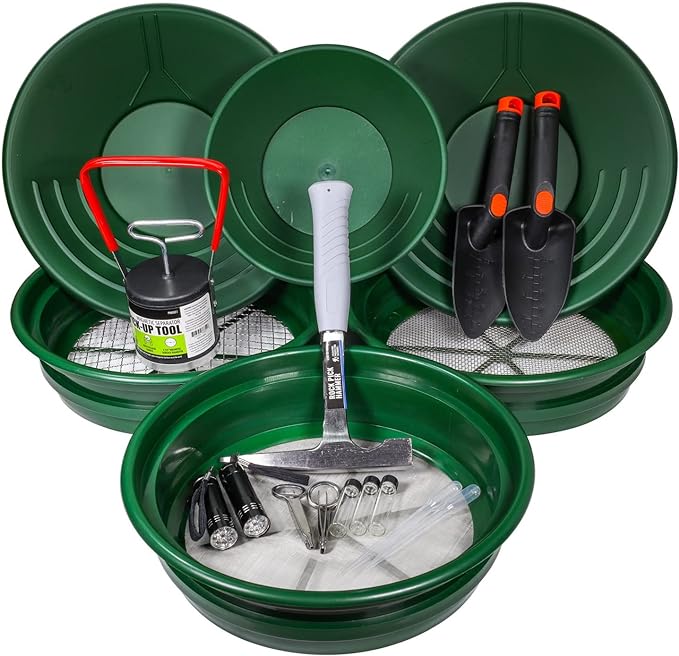 |
Deluxe Gold Panning Kit | Check it out on Amazon |
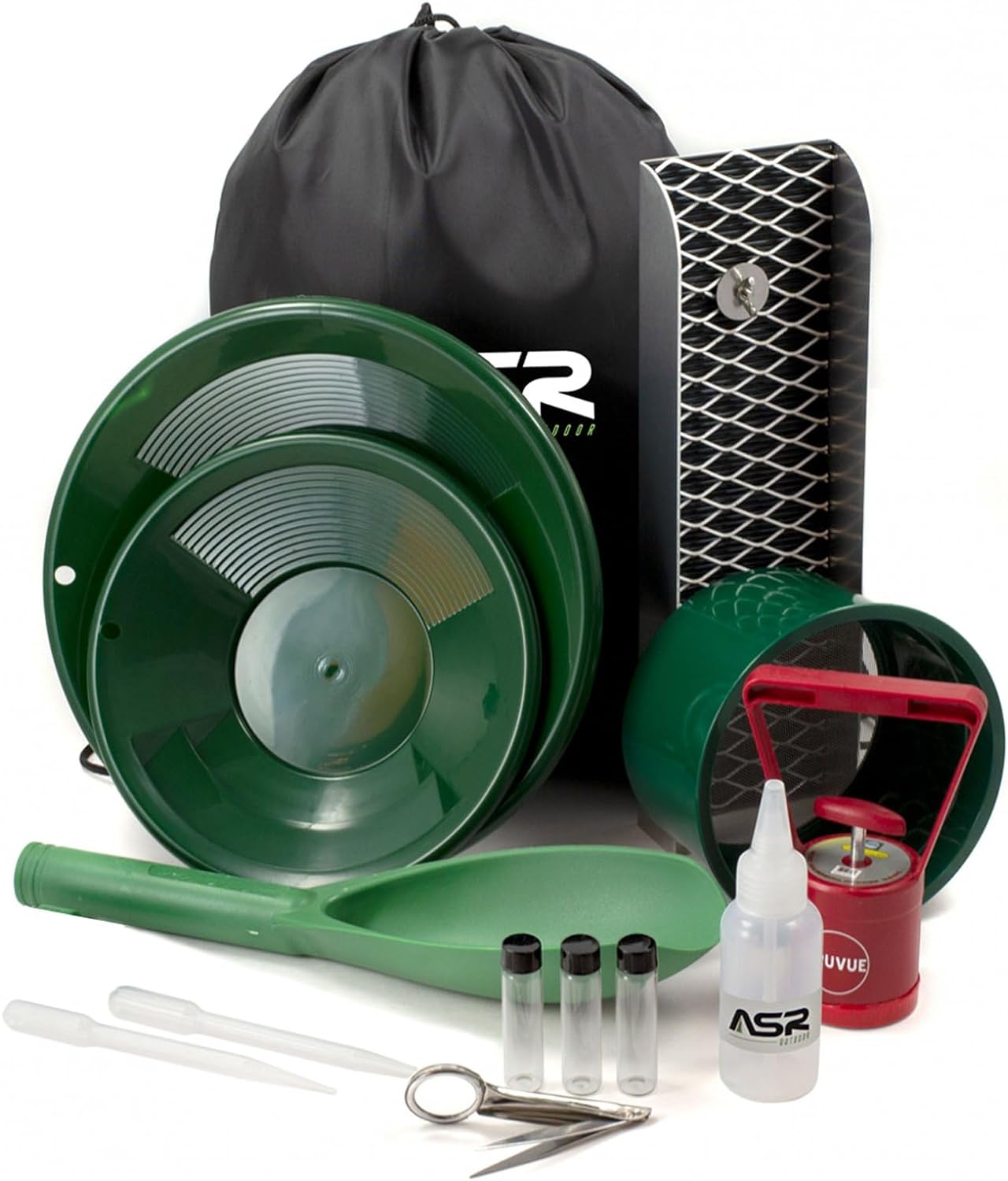 |
Advanced Gold Panning Set | Check it out on Amazon |
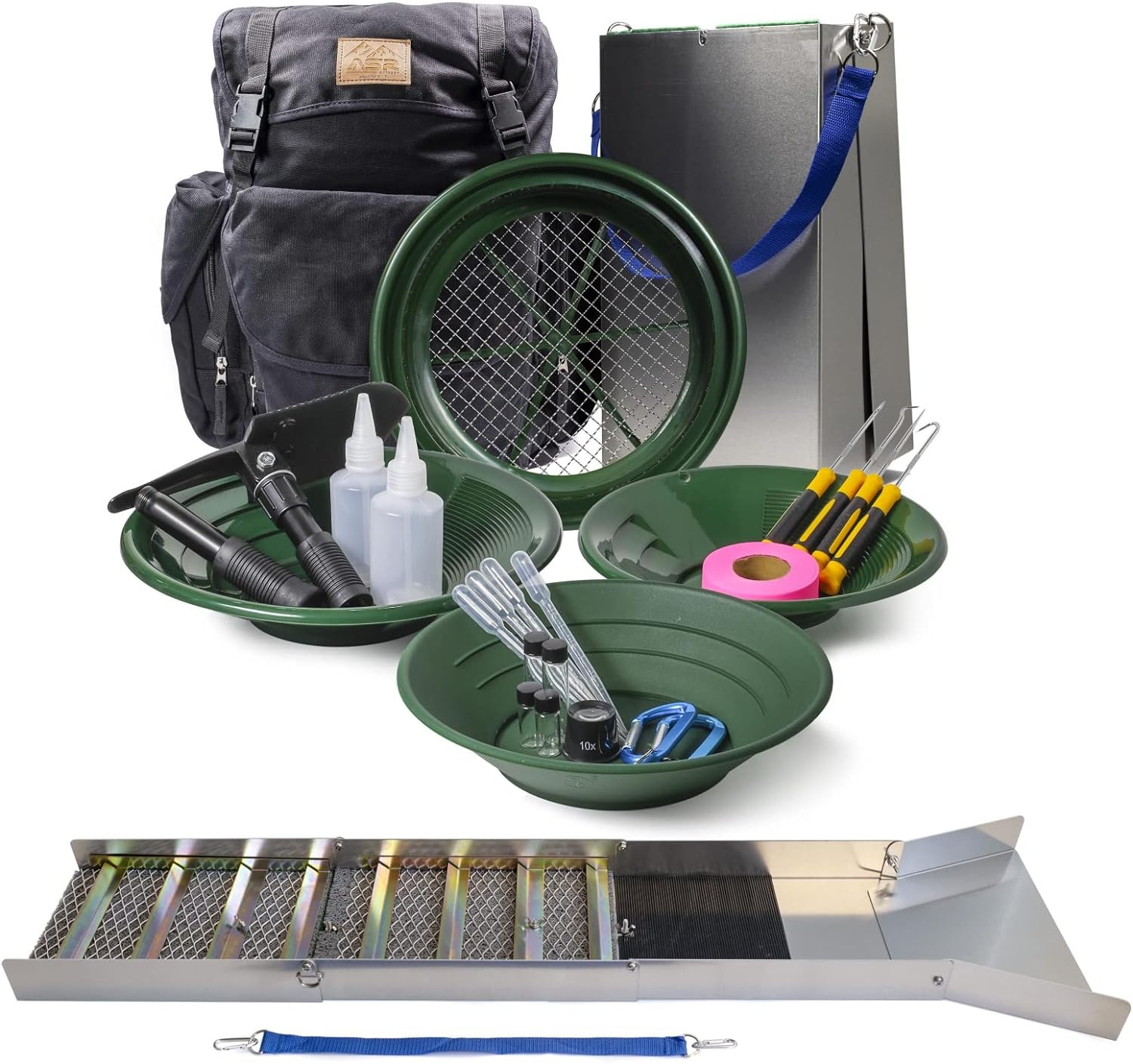 |
Professional Gold Panning Equipment | Check it out on Amazon |
Disclosure: As an Amazon Associate, I earn from qualifying purchases.
